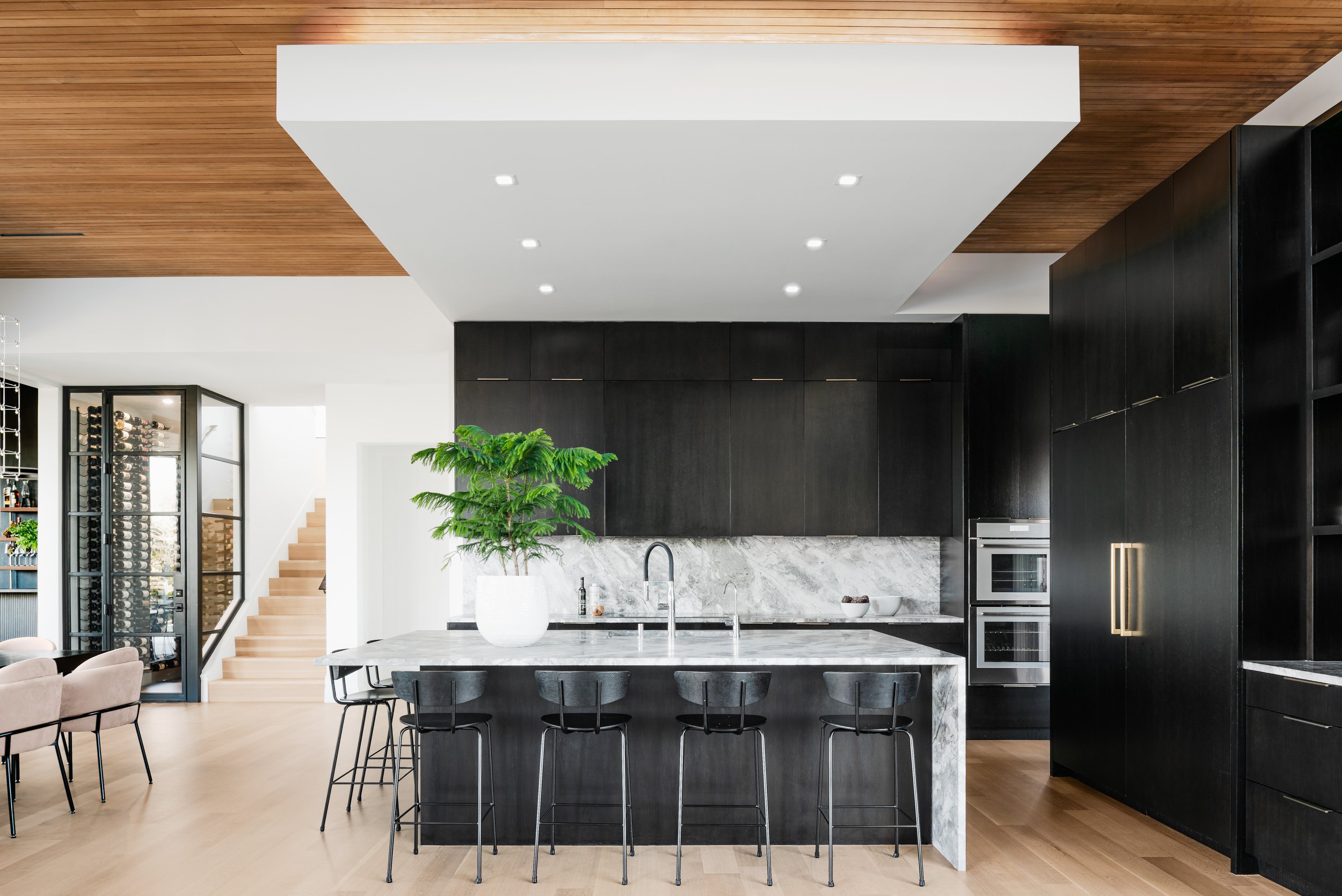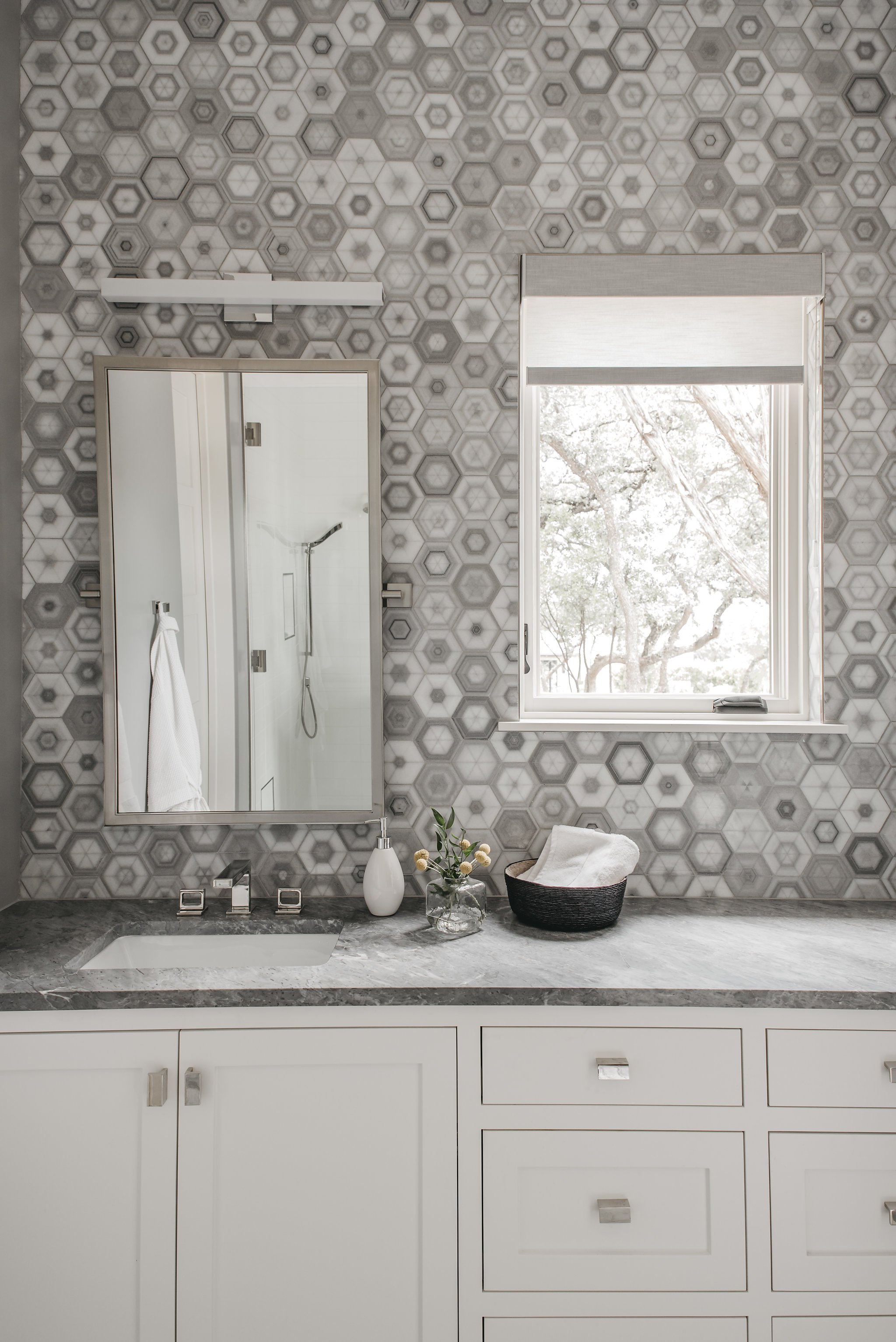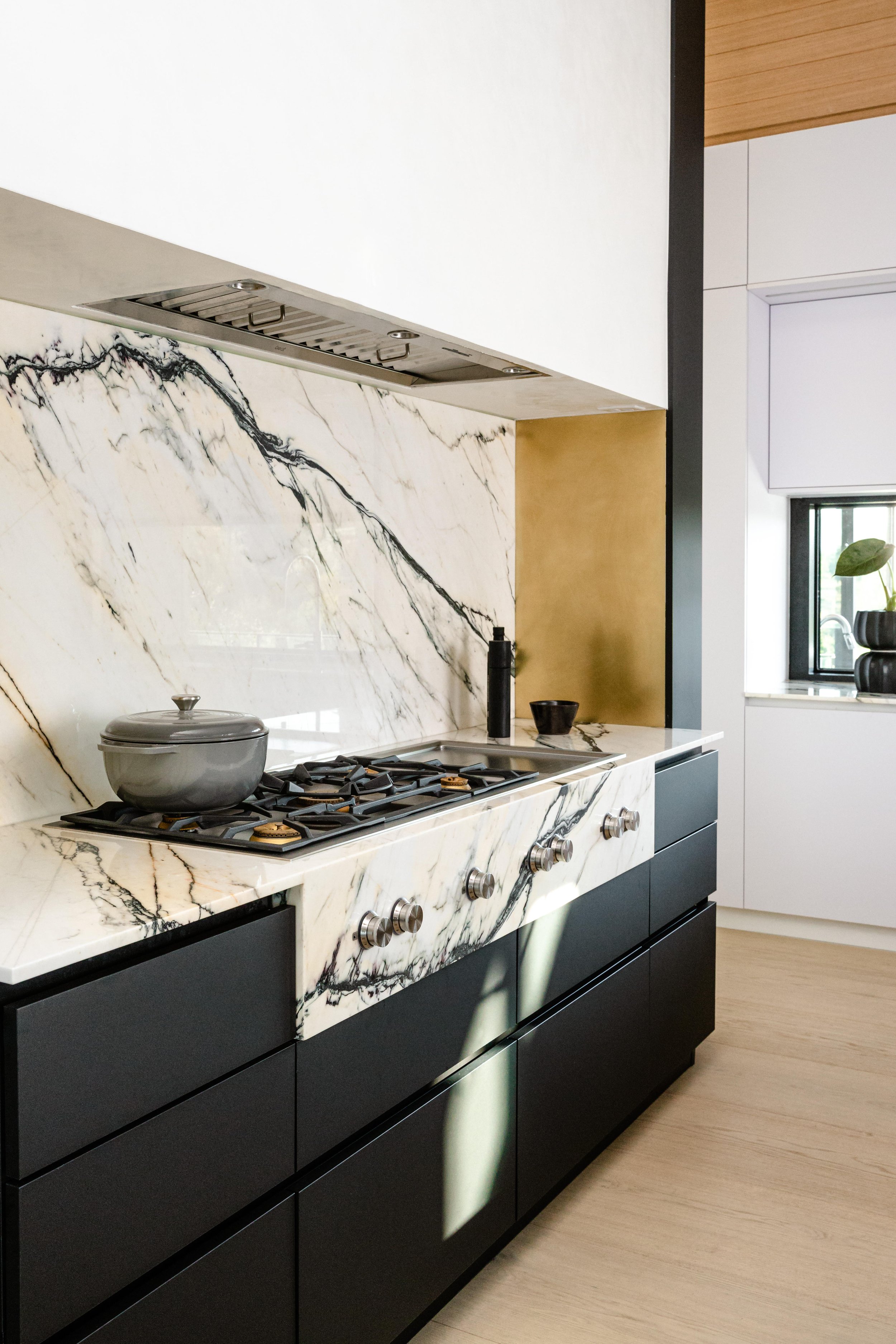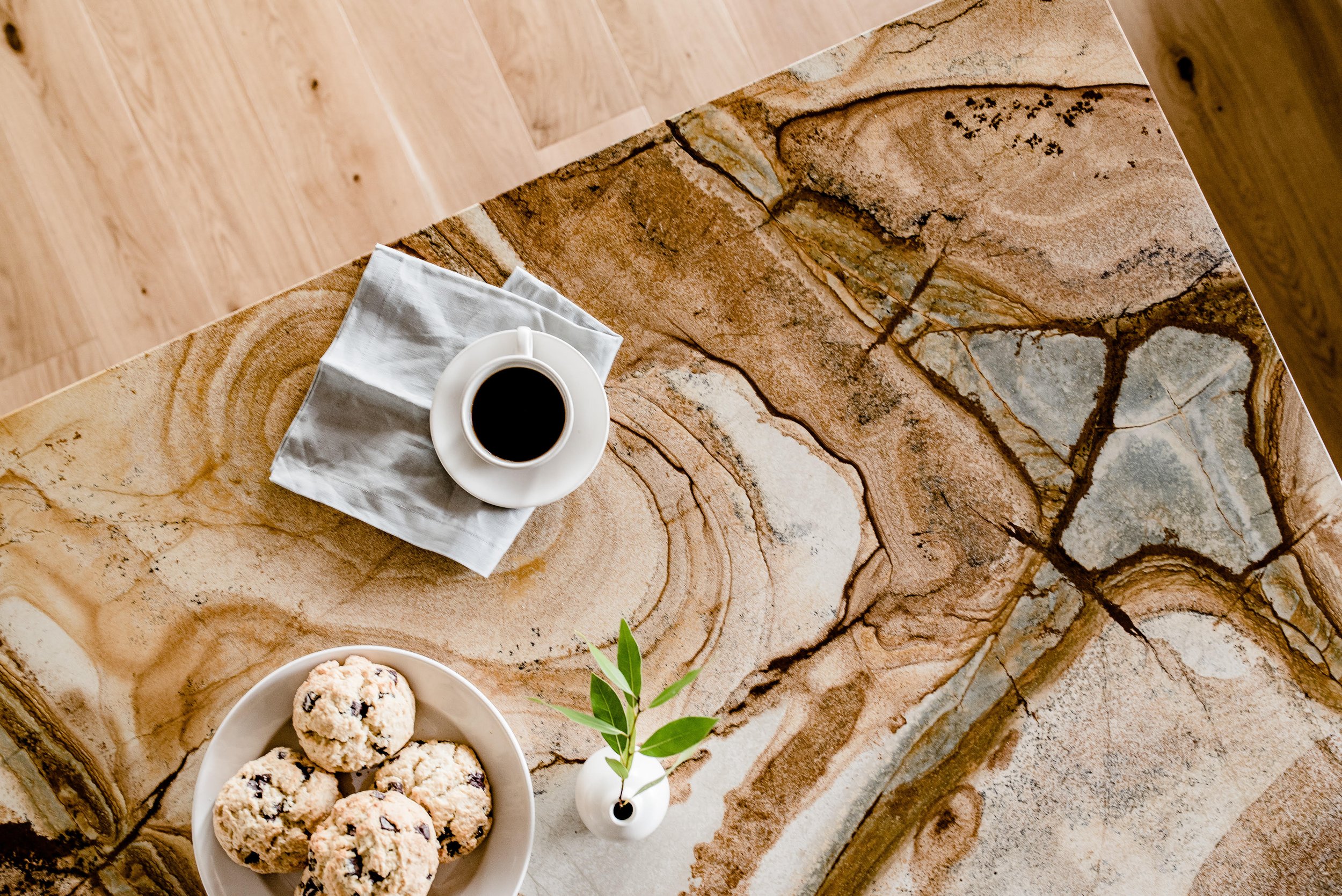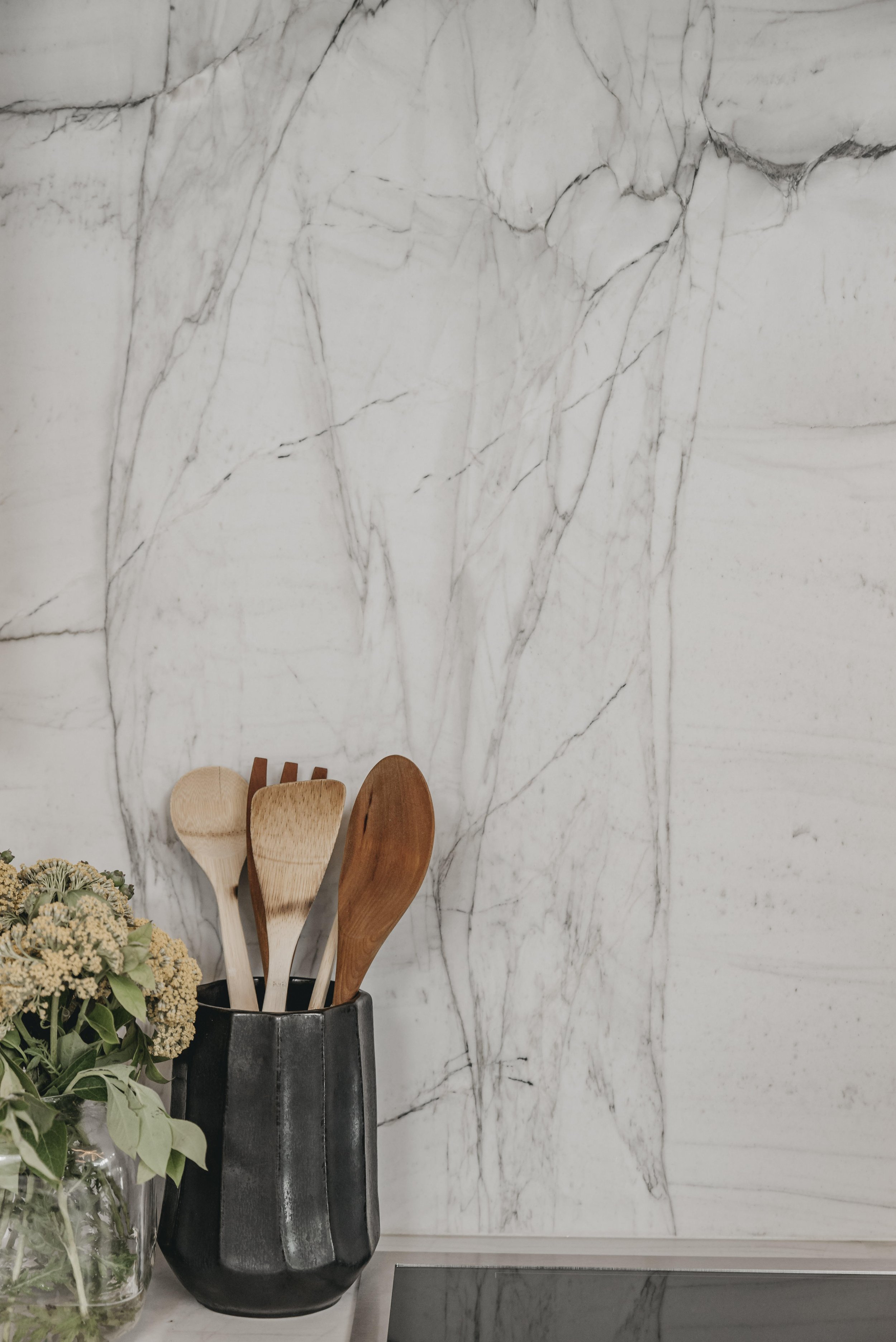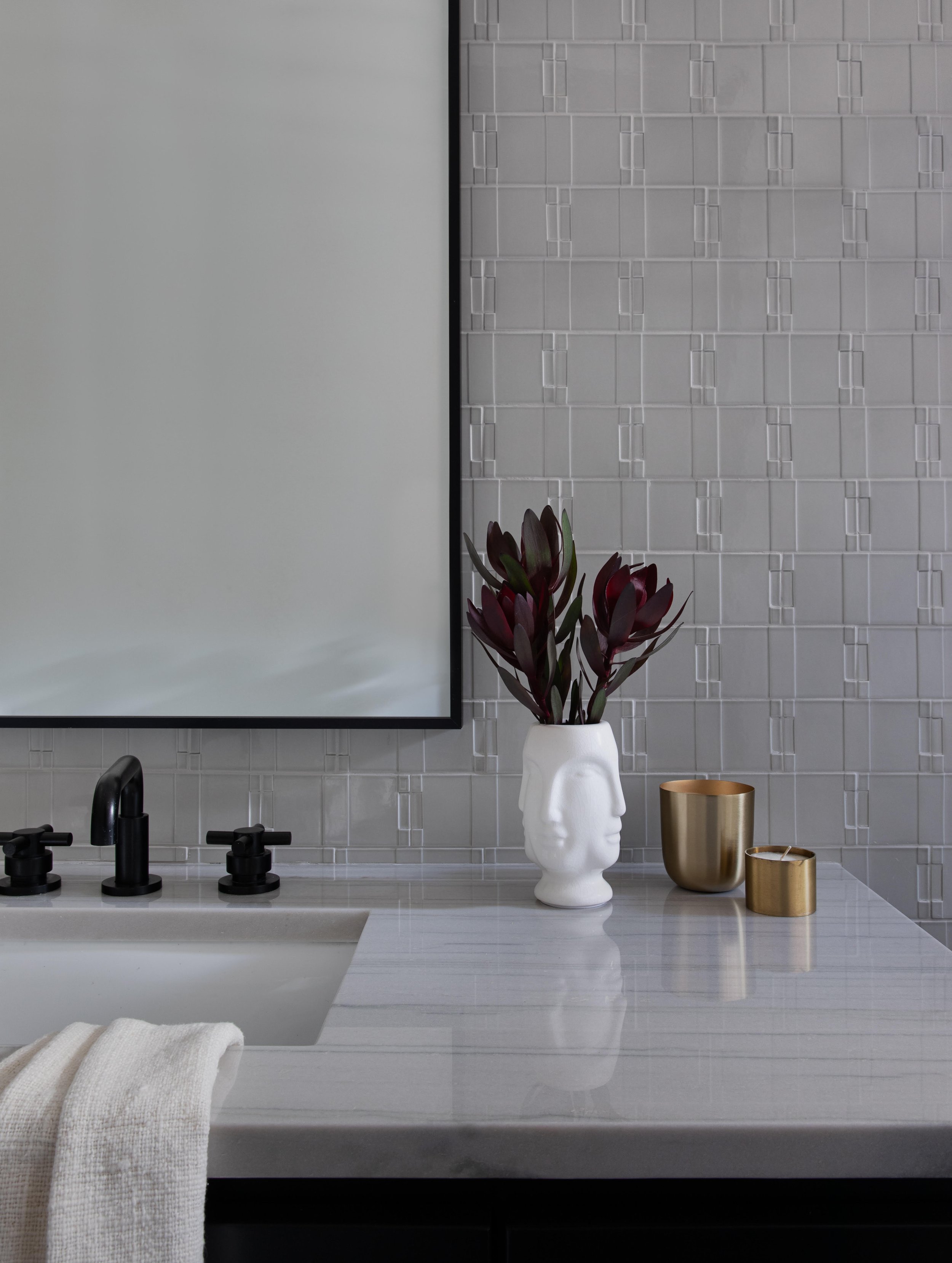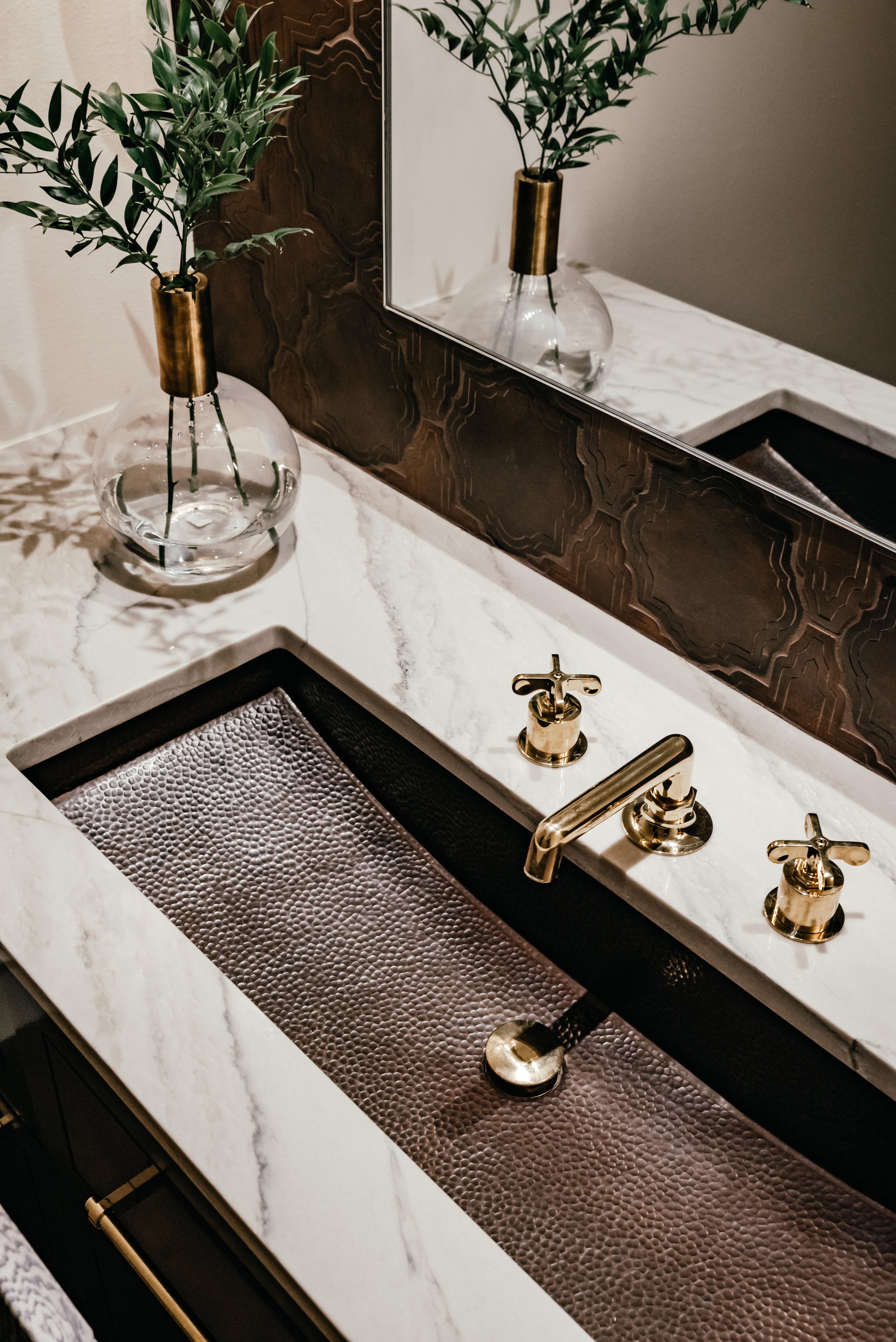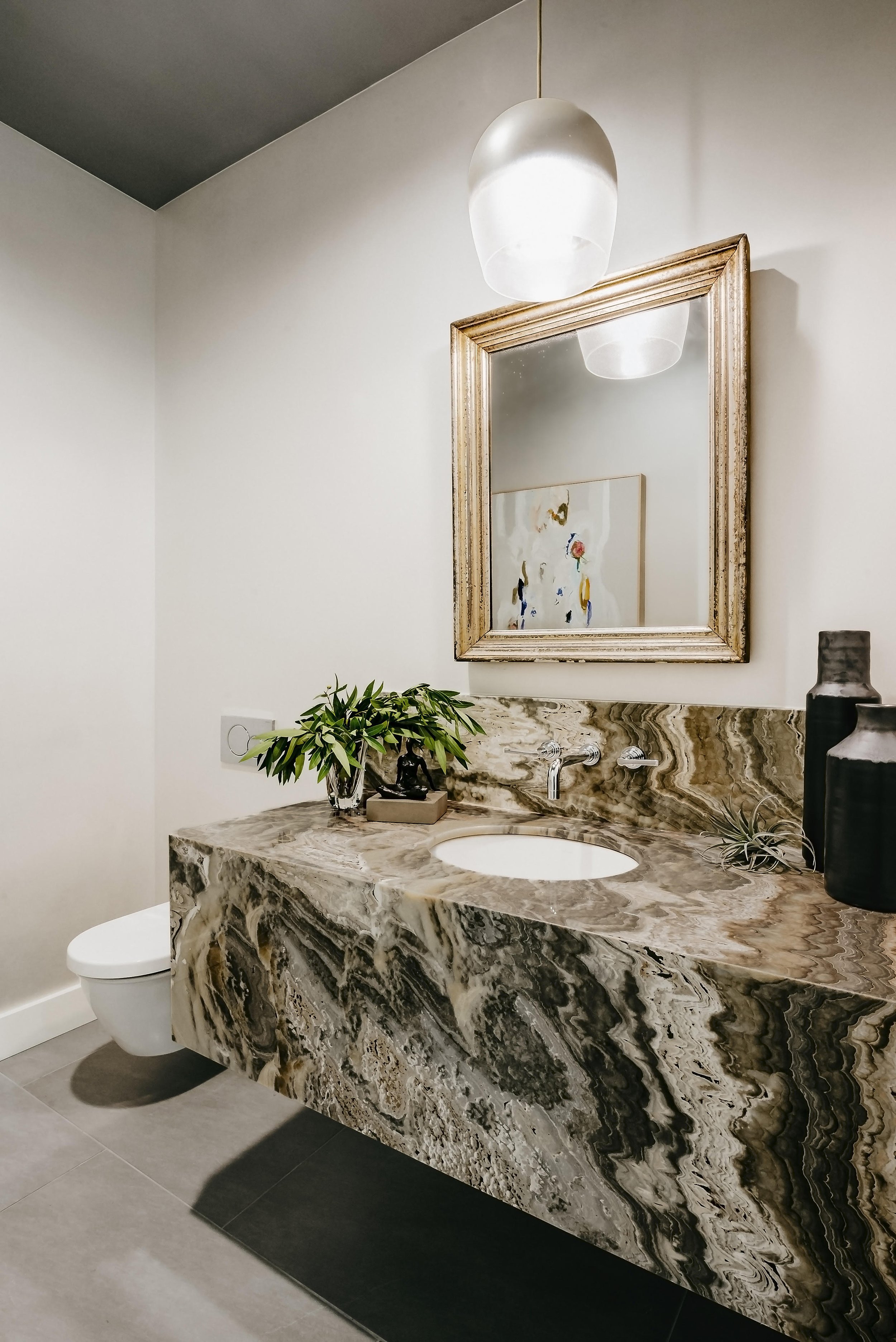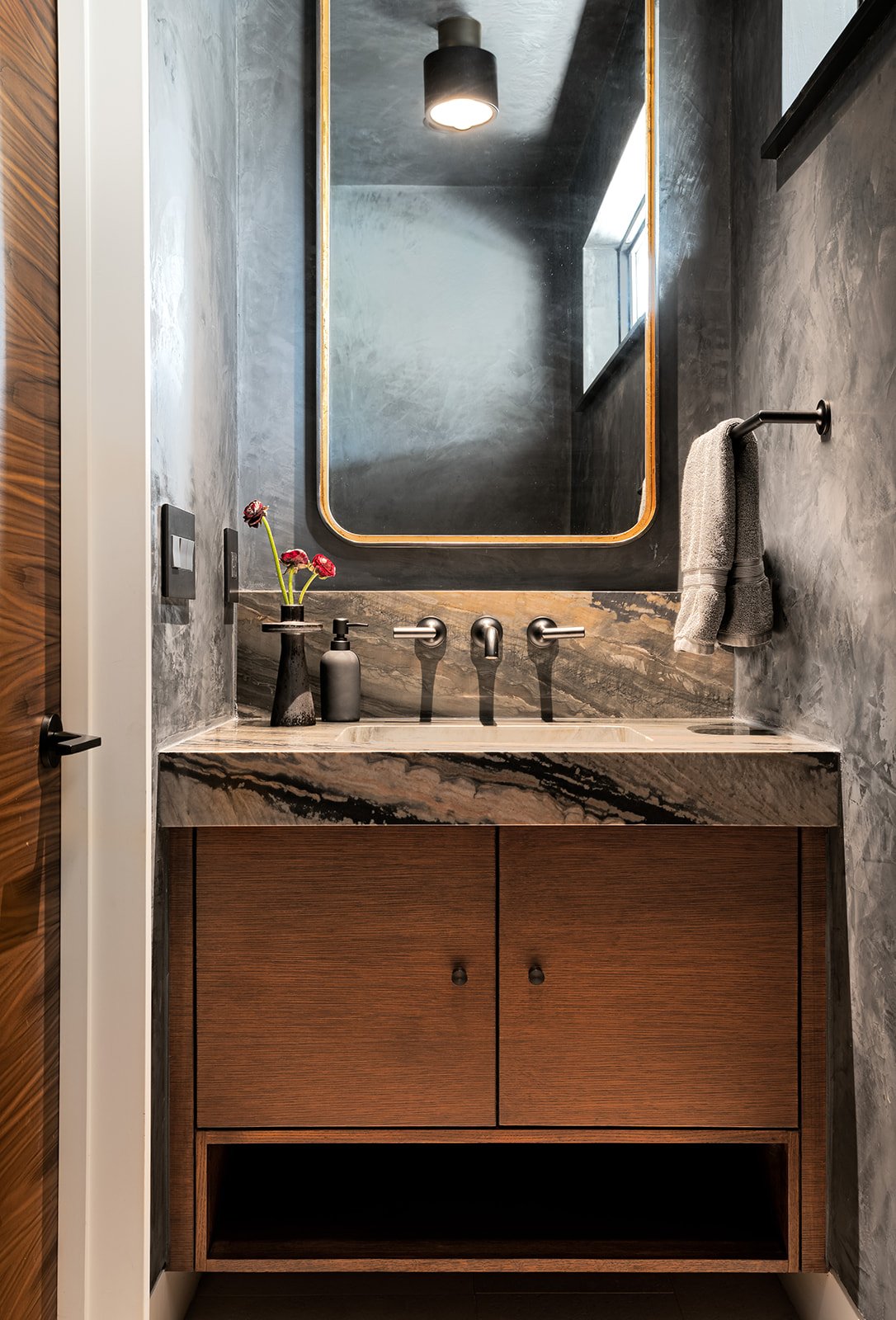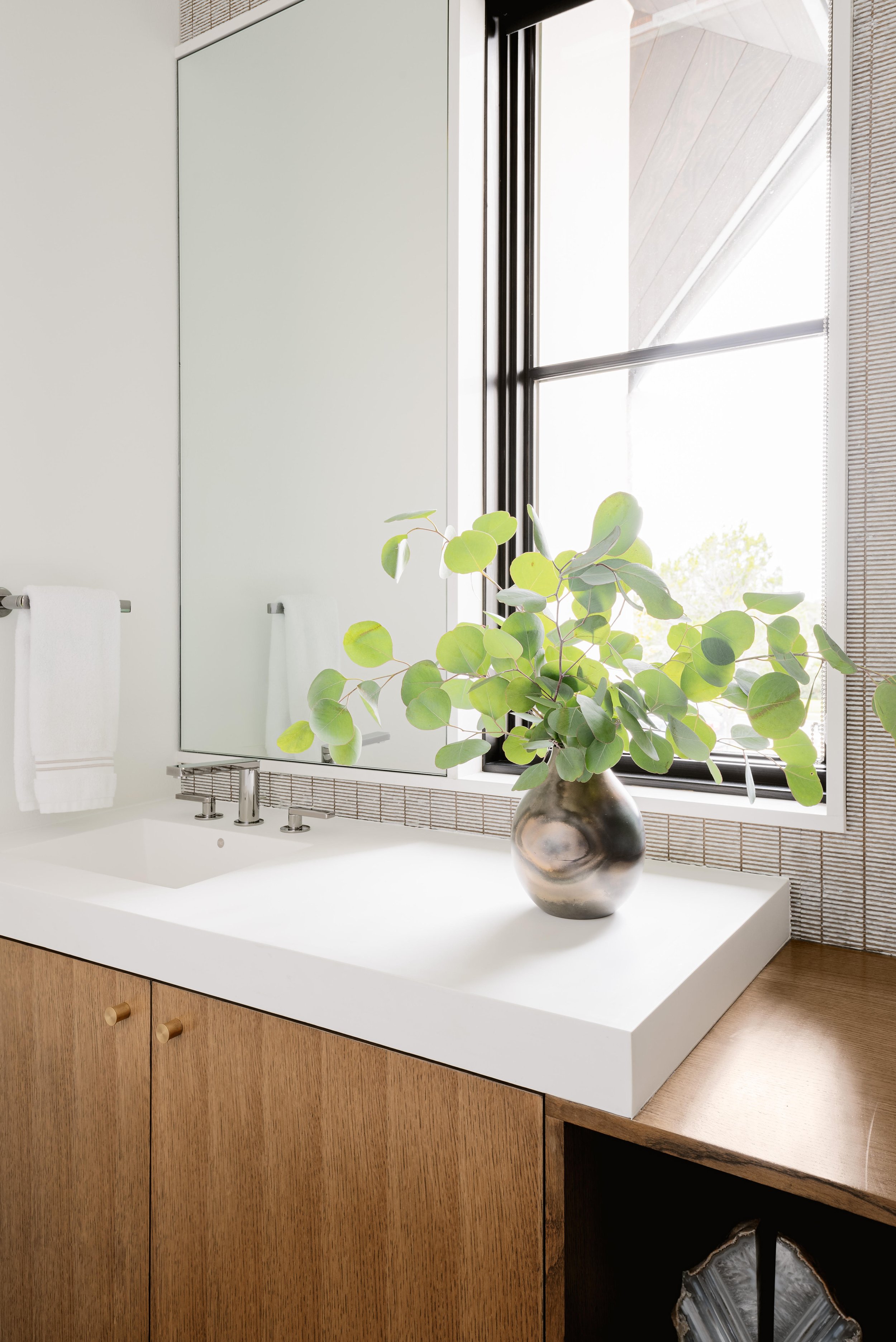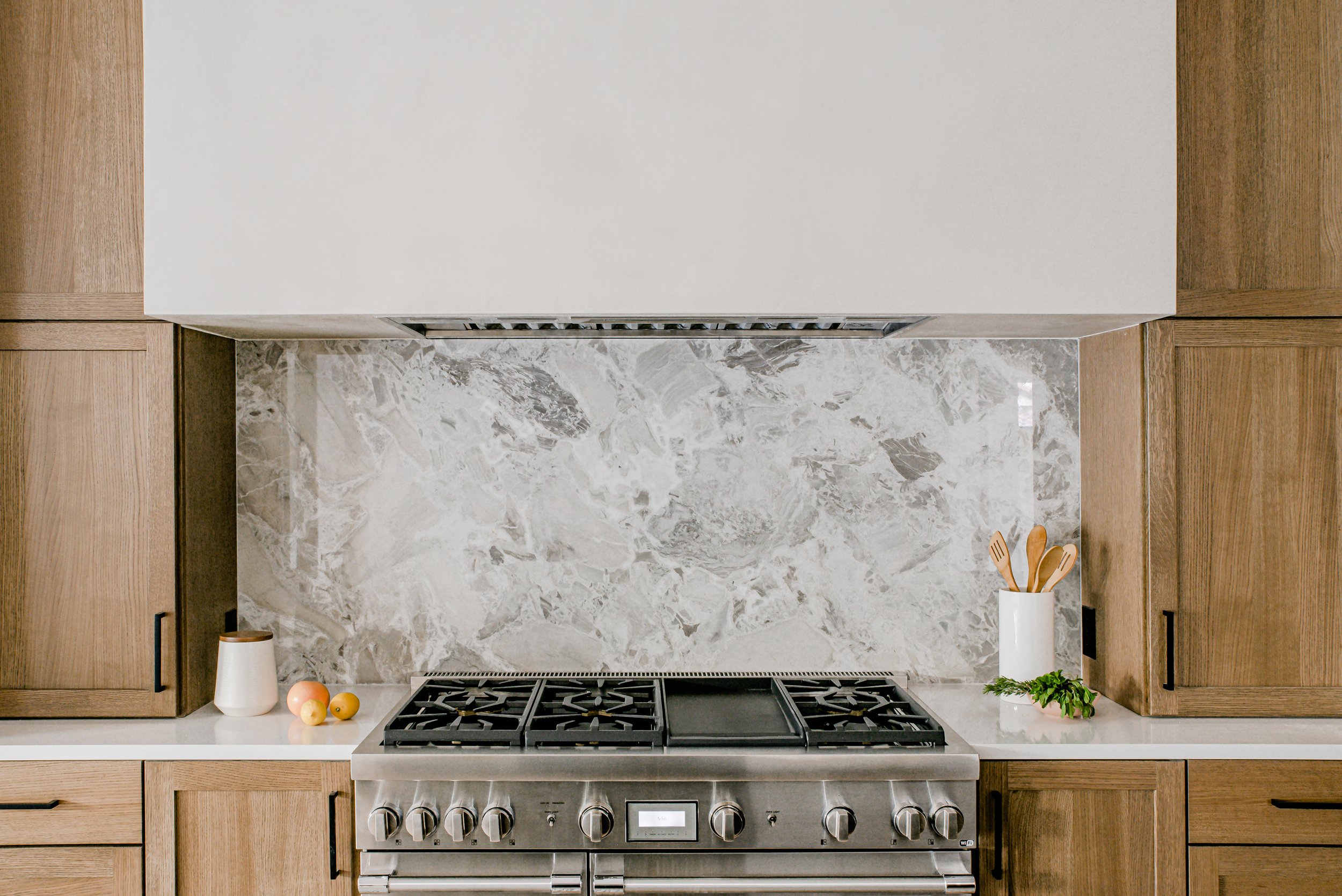I am often compelled to address topics when I see confusion in the market, and lately there have been cool and creative things happening with countertop surfaces. I can tell some homeowners are unclear about the details, so I’m going to outline popular products and strategies along with pros, cons and considerations…
MATERIALS
GENERAL NOTE
A trending look for a while has been white counters with marble veining. Those who know about natural stone know that white marble is too porous to be a good kitchen surface - at least for anyone who wants to avoid stains or discoloration. Most popular images showing white or marble looking counters are either quartz (a man-made, completely non-porous material), or occasionally quartzite (a natural stone that is beautiful, often expensive, and has gained popularity). My preference is for natural stone (I LOVE going to slab yards! Nature’s art is so beautiful), but I understand that often clients want the durability of a man-made product. Let me break down various countertop options, along with their pros and cons, to help you weigh the trade-offs.
(FYI - the materials I’m going to cover are only those sold in slab form. This post will not cover alternate counter materials such as laminates, tile, or concrete. These materials also have pros and cons, but are less common in residential construction).
POPULAR MATERIALS - PROS AND CONS
Marble - Most of you are familiar with the classic forms of Carrara (white with gray veins) and Calacatta marble (typically white and gray with some warm and bolder veining), but there are many new versions of these being quarried, and they are gorgeous! Some slab yards are now classifying types of marble as “soft marble” versus “hard marble” but in general, marble is all porous and will absorb oils and stains, so if you use it, be prepared to accept that. I have some in my kids’ bathrooms, and there will forever be dark areas around the faucets that have absorbed moisture and can’t be cleaned.
Pros: beautiful, natural, unique, timeless
Cons: porous, brittle, expensive
Travertine and Limestone – These are natural stones with similar qualities to marble but warmer in color. They are equally porous and not used often as countertops.
Pros: beautiful, natural, usually less expensive than marble
Cons: porous, brittle
Quartzite – this is a unique material similar to marble, but more dense and less porous (almost as durable as granite). There are many varieties, and it is a good choice for someone who wants light colors and a natural stone. A few of my favorites are White Macaubas and Luce di Luna (also called Mont Blanc), which I have used in multiple projects.
Pros: beautiful, natural, unique, light in color, less porous than marble
Cons: more porous than granite, expensive
Soapstone – I happen to love this stone. It is a metamorphic rock that is dark in background color (frequently with lighter veins) and it is completely durable and non-porous. There aren’t as many patterns and colors as with quartzite and granite, but it is a wonderful choice if you want a natural but durable material.
Pros: beautiful, natural, non-porous
Cons: expensive, few color options
This Soapstone Perimeter counter provides optimal durability & is combined with a Carrara Marble Island (pictured at the bottom of the post).
Granite – Granite is a highly durable stone that is usually dark in color and often heavy in movement. It was popular many years ago, and then fell out of favor due to homeowners feeling it had become common and the trends transitioned to light colored stone. Recently I have seen new exotic types that are unique and beautiful, so I believe it will make a resurgence.
Pros: beautiful, natural, non-porous, usually less expensive than quartzite
Cons: not many, but one is that there are few light-colored options
Porcelain – Recently the applications for porcelain have expanded, and the market has moved from tile to very large format tile and even slabs for counters. They are not yet considered as durable as quartz for counters but are better used as wall treatments. Porcelain slabs are thin, prone to scratching and breaking, and fabricators still tend to discourage them as a countertop choice.
Pros: many color and pattern options, non-porous, cost effective
Cons: thin, brittle
Quartz – while quartz iteself is a natural material, quartz counters are man-made slabs formed by combining crushed quartz with resin. It is sold in 2cm and 3cm slabs and is completely durable and non-porous. The biggest brands you might have heard about are Silestone, Caesarstone, and Cambria, but there are many new companies in the market. One weakness of quartz is that it is UV sensitive and doesn’t resist heat well (the resin is the weak spot), so quartz is not recommended outside and on fireplaces. There are a few man-made products that address this: one is called Dekton (made by Cosentino, the same company who makes Silestone quartz), and another is called Neolith.
Pros: many color and pattern options, non-porous, durable
Cons: not many other than - it is man-made and not UV or heat resistant
DESIGN STRATEGIES
THICKNESSES AND EDGES
There are two standard thicknesses of natural materials and quartz: 2cm and 3cm. (A few materials such as Dekton, Neolith, and Porcelain also come in thinner sheets). When you see a thicker looking edge, it is most certainly a mitered edge. This means an additional piece has been added in a perpendicular fashion on the edge to make it look like it is 3” thick, 4” thick, etc.. A good fabricator will be careful to make the seams and veins flow consistently so it looks like one thick piece of material.
There are many different edge shapes offered for standard material (some are soft and rounded, such as a “Bullnose”, others are flat and square, like my go-to, which is called “Eased”), but there are also less common edges such as a Live-edge, which is cut to be rough and natural looking, and a Waterfall edge, which means there is a vertical side that meets the horizontal plane (similar to the miter). A Waterfall edge typically goes to the ground as a vertical leg.
UNIQUE SINKS AND FEATURES
You’ll see many unique counter design strategies these days such as integral sinks, decorative backsplashes with wall mounted faucets, and basin sinks formed on all sides with counter material. In most cases the fabricator can custom build these, but there are vendors in the market who offer them pre-made. MTI is a vendor we have used through Laura Burton Interiors who offers custom sinks, and we have also crushed on some adorable new basin collections from a British company called Claybrook.
SNEAKY TRICKS OF THE TRADE
Because we are well aware of the pros and cons of various materials, you’ll see designers using a mix of materials to optimize the look versus durability. I often will use a favorite beautiful material on the backsplash or island, with a man-made or ultra durable material as the perimeter counter.
There are so many unique ways to use counter materials these days. Be sure to research and understand the pros and cons of each before you get attached to any one material or strategy.
Happy countering!
